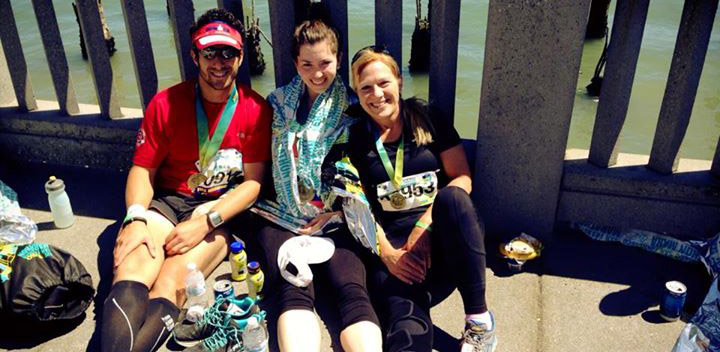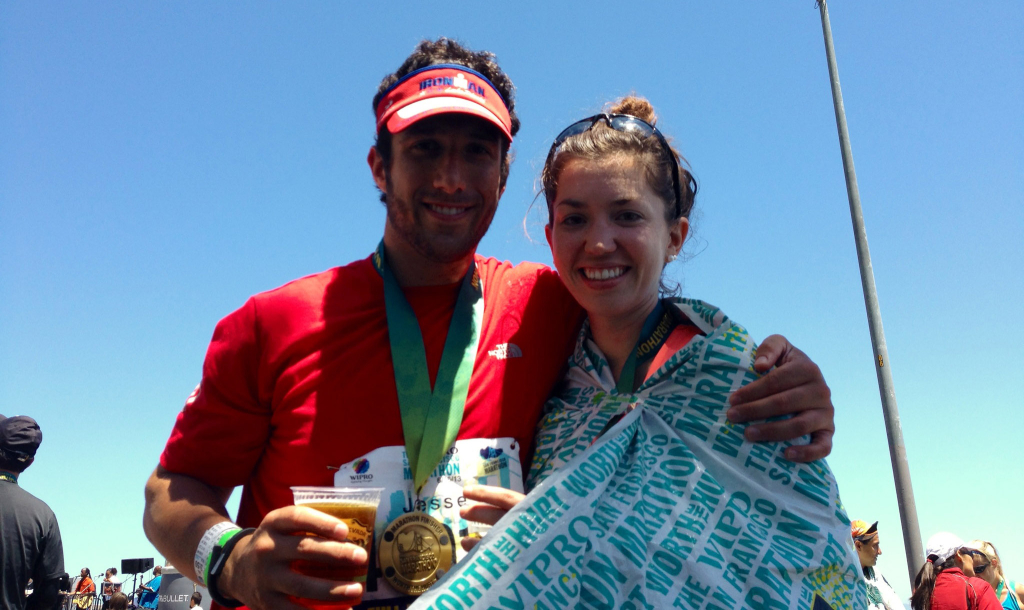The Agony and the Ecstasy of The Biofreeze San Francisco Marathon
This July, I’ll be running The Biofreeze San Francisco Marathon for the third year in a row. The race was my first road marathon in 2012, and I’ve yet to pound the pavement for 26.2 miles in a different city. Although I’m no expert at running or even this race in particular, I’ve ran the race through the eyes (and feet) of both a first-time marathoner and as a more seasoned runner. I understand the thrill of running on the Golden Gate Bridge and the agony of looping around Golden Gate Park with half marathoners in the background celebrating their accomplishment. Most sections of the race – the Embarcadero, Chrissy Field, the Golden Gate Bridge, the Presidio, and Golden Gate Park – comprise my weekly training run routes; I have the luxury of consistent training on these running routes and have experiences with these paths and trails apart from TSFM. While this race isn’t insanely hilly like a trail race and you won’t traverse San Francisco’s steepest climbs, the elevation gain is no joke, and the energy within the vastly different neighborhoods you’ll visit can affect your running mood for better or for worse. As someone who is deeply affected their surroundings and feels best when entering a situation with a plan, I’ve devised a mental strategy for the emotional aspects of the course so you can cross the finish line triumphant and proud. With running, your mental state is half the battle.
Miles 1-2: The Embarcadero to Fisherman’s Wharf. When the starting gun goes off, runners will inevitably start off too fast and you’ll weave in and out avoiding people, wasting a ton of energy. Use this flat section as a way to set your marathon pace and keep your heart rate down.
Mile 2.5: The hill at Fort Mason. This is when runners begin showing their true colors (and whether or not they run in San Francisco). Participants will slow down or walk, but powering up this brief but steep hill feels better than walking so early in the race.
Miles 2.5-5.5: Chrissy Field to the Golden Gate Bridge. The flat section between Fort Mason and that beloved international orange bridge is the most picturesque section of the race. Thankfully, you’ll miss the throngs of tourists at this time in the morning, but gorgeous views of Alcatraz, Angel Island, the Marin Headlands, and the Golden Gate Bridge will distract you.
Miles 5.5-9.5: The Golden Gate Bridge. After the massive schlep up to Lincoln Boulevard (where many participants will walk), you’re treated to the hallmark of this race: running the Golden Gate Bridge. With a turnaround at the Vista Point in Marin County, this section of the race flies by, so enjoy the views and conserve your energy for the miles ahead.
Miles 9.5-12.5: The Golden Gate Bridge to Golden Gate Park. The theme for this section is “rolling hills.” The incline under the bridge is intense, but remain calm: you’re rewarded by the biggest elevation loss in the race when you run adjacent to the coastal trail and into the Richmond. The section through the avenues is mentally tougher than the miles behind you. Although residents line the streets to cheer for the marathon, the neighborhood is less picturesque, and you can see every little hill ahead of you.
Miles 12.5-19: Golden Gate Park. The miles in the park have been the most difficult for me each year I’ve run this race. With half marathoners finishing, you can hear their cheers and smell their barbecue, and you’ve barely hit the halfway mark. Golden Gate Park is deceptively hilly, and the elevation gain feels relentless. After hitting the half marathon mark, you’ll steadily climb until mile 17. Despite living in San Francisco and frequently running in the park, I found this section of race to be disorienting and generally anxiety inducing. Mentally visualizing leaving the park (and distracting myself with my playlist) helped me emerge ready to tackle the race’s last miles.
Miles 19-21: The Haight to the Mission. The massive elevation drop from the park to the Haight is the most triumphant part of this race for me, apart from the finish line. The spectators and the uptick in energy when you hit city streets again feel like a world away from your time spent slogging through Golden Gate Park.
Miles 21-22: The Mission. Just when you thought the hills were over, a small hill presents a literal bump in the road at mile 22 on 16th Street. You’ll also be looking into the sun, and the fog may have burned off by now (like it did the last two years), so this part feels more difficult than it actually is. Spectators help take your mind off of the pain.
Miles 22-23.5: Dogpatch to the turnaround. As you run out into the Dogpatch and closer to the bay and At&T Park, you know the end is near, but you keep running away from the finish line instead of toward it. Live music and a small population of spectators help distract, but silently pleading for the turnaround takes precedence.
Miles 23.5-26.2: Turnaround to the finish line. At the turnaround, you know exactly how much further you have to run; you can see At&T Park and beyond while you edge your way to the Embarcadero and the finish line. I run eight-milers from my apartment in Russian Hill with Mission Bay serving as the turnaround. Having ran this route so many times, I know my mileage down to the tenth of a mile, and there’s no fooling myself into thinking I’m closer to the end than I really am. When you round At&T Park and hit the Embarcadero again, spectators cheering for their loved ones helps rally your spirits to run, walk, or crawl to the finish line. And when you cross the finish line, you realize the long, strenuous journey was all worth it.



